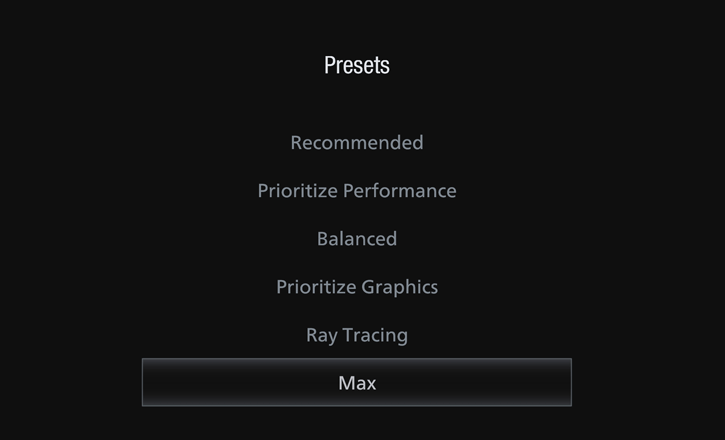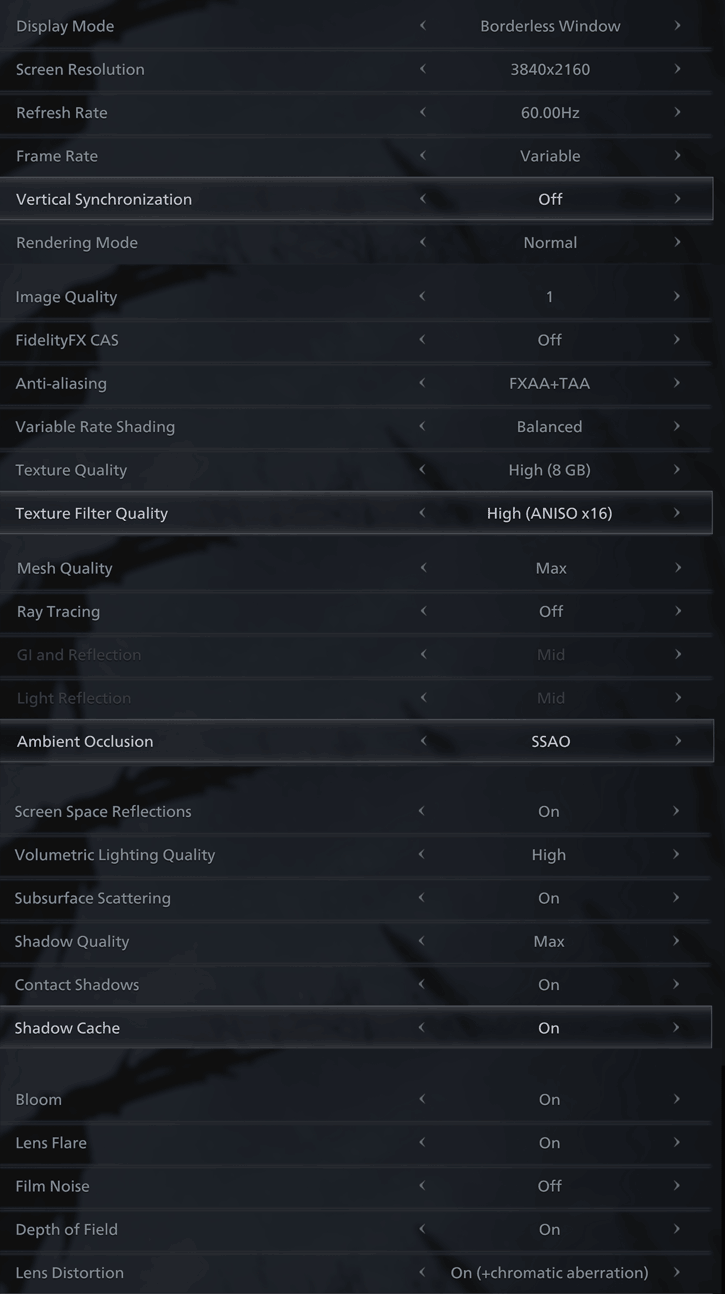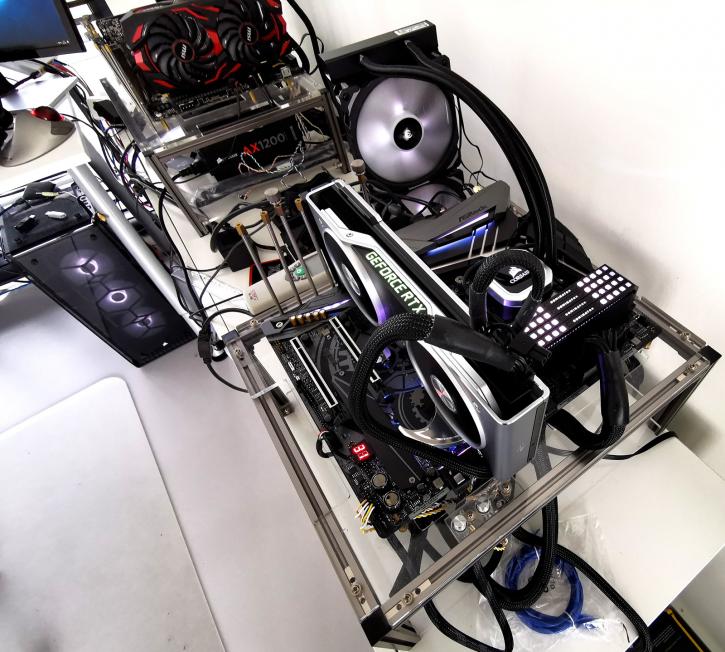Image Quality and System requirements
Image quality settings and benchmark system
Resident Evil Village makes use of the RE Engine and it looks better than the prequel. Performance-wise pretty much any card in our test suite was able to offer a smooth gaming experience in Full HD up to 4K and on Max settings. In our opinion overall with a modern GPU, a 2560×1440 resolution will be ideal for this game but is is also very Ultra HD capable.
Really .. just hit Max
Quality modes
The gamer offers multiple quality modes, MAX is recommended and the one we'll use. Keep in mind that if you have a graphics card with less than 8GB of graphics memory, the performance hit will become bigger, but it's still very acceptable with even a 6GB card. By default, Resident Evil Village: is frame rate cap is unlocked, so there is nothing you need to do to unlock it, VSYNC is enabled at standard though. Our settings:
The best quality mode is really playable gameplay-wise once you pass 2560x1440 as monitor resolution with a mainstream graphics card, here memory becomes an issue. The game makes use of DirectX 12. In the article, we'll also peek at performance with different quality modes, and obviously VSYNC disabled. To create an equal playing field between AMD and NVIDIA cards we selected:
- MAX PRESET
- VSYNC Off
- FidelityFX CAS Off
- Anti Aliasing FXAA+TAA
- VRS Balanced (works only on compatible cards)
- Ambient Occlusion SSAO
Of course for the Raytraced test we select MAX, and then selected Raytracing ON at HIGH for both GI Reflection and light reflections.
The graphics cards tested
In this article, we'll make use of the following cards at a properly good PC experience graphics quality-wise, the quality mode as shown above with Vsync disabled (which needs to be done by editing a configuration file). The graphics cards used in this test are:
- GeForce GTX 1080
- GeForce GTX 1080 Ti
- GeForce GTX 1650 Super
- GeForce GTX 1660
- GeForce GTX 1660 Super
- GeForce GTX 1660 Ti
- GeForce RTX 2060 Super
- Geforce RTX 2070
- GeForce RTX 2070 Super
- GeForce RTX 2080
- Geforce RTX 2080 Super
- GeForce RTX 2080 Ti
- GeForce RTX 3060
- GeForce RTX 3060 Ti
- GeForce RTX 3070
- GeForce RTX 3080
- GeForce RTX 3090
- Radeon RX 5600 XT
- Radeon RX 5700
- Radeon RX 5700 XT
- Radeon RX 580
- Radeon RX 590
- Radeon RX 6700 XT
- Radeon RX 6800
- Radeon RX 6800 XT
- Radeon RX 6900 XT
- Radeon RX Vega 56
- Radeon RX Vega 64
Test environment (system specification)
System Spec
- Ryzen 9 5950X
- X570 (ASUS Crosshair VIII HERO)
- 16GB DDR4 3600 MHz CL14
- NVMe, M.2. SSD
Graphics drivers
- GeForce graphics cards use the 466.27 (download).
- Radeon graphics cards we used a beta AMD Radeon Adrenalin 21.10.01.17 driver (not yet available for download).
- Resize BAR (rBAR) is activated




